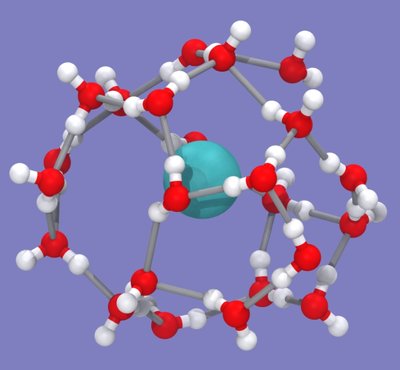what is magnesium phosphate formula
What is Magnesium Phosphate?
Magnesium phosphate is a group of chemical compounds composed of magnesium and phosphate ions. Known for its versatility, it appears in various forms and is used in numerous industries, from health supplements to agriculture. Each form of magnesium phosphate has unique properties, making it useful in different applications.
Overview of Magnesium Phosphate Compounds
Magnesium phosphate exists in multiple forms, each with slight differences in composition and functionality. These forms include:
- Monomagnesium Phosphate (Mg(H₂PO₄)₂)
This compound contains one magnesium ion for every two phosphate ions. It is commonly used in food additives and as a leavening agent in baking. - Dimagnesium Phosphate (MgHPO₄)
Here, one magnesium ion pairs with a single phosphate ion. It is often employed in the production of supplements and pharmaceutical products due to its bioavailability. - Trimagnesium Phosphate (Mg₃(PO₄)₂)
As the name suggests, this form has three magnesium ions bonded with two phosphate ions. It’s highly valued in agricultural fertilisers and certain buffering agents.
Each variation caters to specific needs, with applications spanning industries like medicine, food production, and even dental care.
For more on the different forms of magnesium phosphate and their uses, check out this overview.

Chemical Properties
they are ionic compounds made up of magnesium cations (Mg²⁺) and phosphate anions (PO₄³⁻). This structure ensures they are highly stable and versatile in reactions.
Key Characteristics of Magnesium Phosphate:
- Ionic Composition:
Magnesium phosphate consists of positively charged magnesium ions and negatively charged phosphate ions, which attract and form ionic bonds. - Solubility:
While magnesium phosphate is slightly soluble in water, this property varies depending on the specific form. It dissolves more readily in acidic environments, which is why it is used in biological and pharmaceutical products. - Reactivity:
When mixed with water, magnesium phosphate can undergo hydrolysis, releasing magnesium hydroxide and phosphoric acid in some cases. This reaction makes it useful in buffering systems where pH control is essential.
The compound’s inherent stability and reactivity make it suitable for a wide range of chemical processes. For a detailed breakdown of its chemical nature, refer to PubChem’s entry on magnesium phosphate.
Understanding these properties helps explain why magnesium phosphate is a crucial component in everything from growing crops to supporting our health.
Chemical Formula of Magnesium Phosphate
Magnesium phosphate is an important ionic compound with a range of practical uses, from healthcare to agriculture. To truly grasp its significance, understanding its chemical formula—Mg₃(PO₄)₂—and its synthesis is essential. Let’s explore its composition and related details below.
Tricalcium Magnesium Phosphate Formula
The chemical formula of magnesium phosphate is Mg₃(PO₄)₂, indicating it consists of three magnesium ions (Mg²⁺) and two phosphate ions (PO₄³⁻). This balanced ionic compound forms when magnesium cations bond with phosphate anions, achieving electrical neutrality.
Breaking it down further:
- Magnesium (Mg): Atomic weight = 24.305 g/mol
- Phosphorus (P): Atomic weight = 30.974 g/mol
- Oxygen (O): Atomic weight = 15.999 g/mol
When combined proportionately, the compound has a molar mass of approximately 262.86 g/mol. This precise arrangement makes it suitable for various chemical and biological applications. Learn more about its molecular configuration at PubChem.
Hydrated Forms and Variants
Magnesium phosphate exists in several hydrated forms, depending on the water molecules it integrates during synthesis. The most common variants include:
- Monohydrate (Mg₃(PO₄)₂ · H₂O): Contains one water molecule.
- Pentahydrate (Mg₃(PO₄)₂ · 5H₂O): Incorporates five water molecules.
- Octahydrate (Mg₃(PO₄)₂ · 8H₂O): Encloses eight water molecules.
These hydrated forms are especially relevant in industries requiring specific solubility or stability parameters. The inclusion of water molecules significantly affects the compound’s crystalline structure and reactivity.
Molecular Synthesis of Magnesium Phosphate
A common way involves combining a soluble magnesium salt (like magnesium chloride, MgCl₂) with a phosphate-containing salt (such as dipotassium phosphate, K₂HPO₄). The reaction proceeds as follows:
3MgCl₂ + 2K₂HPO₄ → Mg₃(PO₄)₂ + 4KCl
The insoluble magnesium phosphate precipitates out, and potassium chloride remains dissolved. This efficient reaction highlights the precise stoichiometry needed to create magnesium phosphate in its pure form.
Magnesium Phosphate Synthesis with Other Chemicals
The synthesis of magnesium phosphate can adapt to various chemical environments depending on its intended use. Here are some notable reactions:
- With Sulphuric Acid:
Combining magnesium hydroxide (Mg(OH)₂) with phosphoric acid (H₃PO₄) achieves magnesium phosphate alongside water:
3Mg(OH)₂ + 2H₃PO₄ → Mg₃(PO₄)₂ + 6H₂O - In Buffer Solutions:
Magnesium phosphate is used to create buffer solutions, stabilising pH levels in biological and industrial systems. When mixed with weak acids or bases, it forms complex ionic balances essential for maintaining equilibrium. - Fertiliser Production:
Magnesium phosphate is often formulated with nitrogen and potassium compounds to enhance its efficacy as a fertiliser, providing essential nutrients to soil.
Understanding these synthesis processes can offer insight into its role as a versatile and valuable compound.
Calculation of Molar Mass
To calculate the molar mass of magnesium phosphate (Mg₃(PO₄)₂), follow these steps:
- Determine the individual atomic masses:
- Magnesium (Mg): 24.31 g/mol
- Phosphorus (P): 30.97 g/mol
- Oxygen (O): 15.999 g/mol
- Multiply by the quantity of each atom in the formula:
- Magnesium: ( 24.31 \times 3 = 72.93 )
- Phosphorus: ( 30.97 \times 2 = 61.94 )
- Oxygen: ( 15.999 \times 8 = 127.992 )
- Add the results together:
( 72.93 + 61.94 + 127.992 = 262.86 , \text{g/mol} )
This detailed breakdown ensures you can confidently determine its molar mass if needed for precise scientific calculations. If you’d like to review this concept in more detail, there’s a helpful example at Socratic.
Understanding the chemical formula and synthesis of magnesium phosphate provides the foundation for its diverse applications, from agriculture to medicine. As you delve further into its properties, you’ll see why Mg₃(PO₄)₂ continues to be such a valuable compound.






